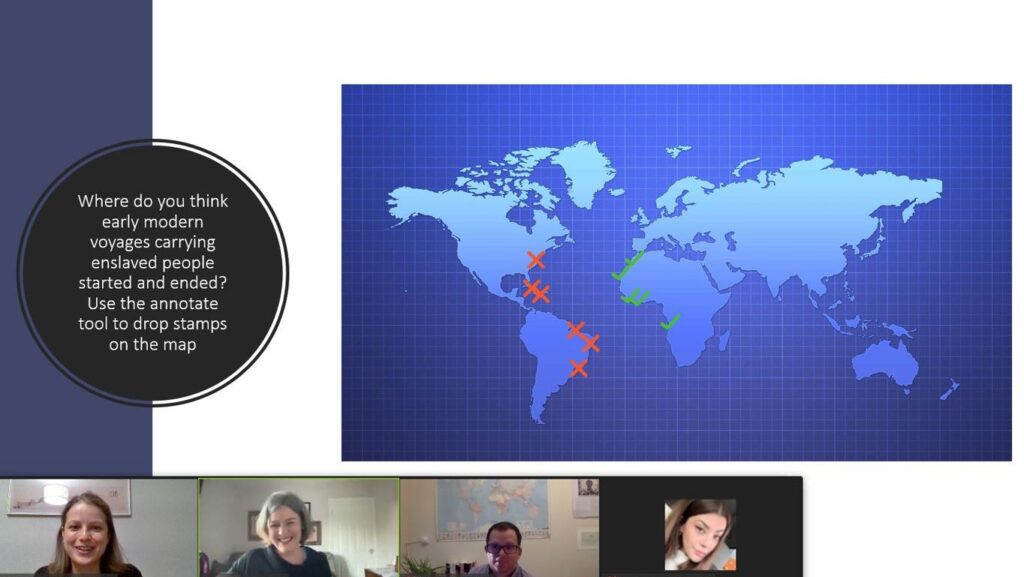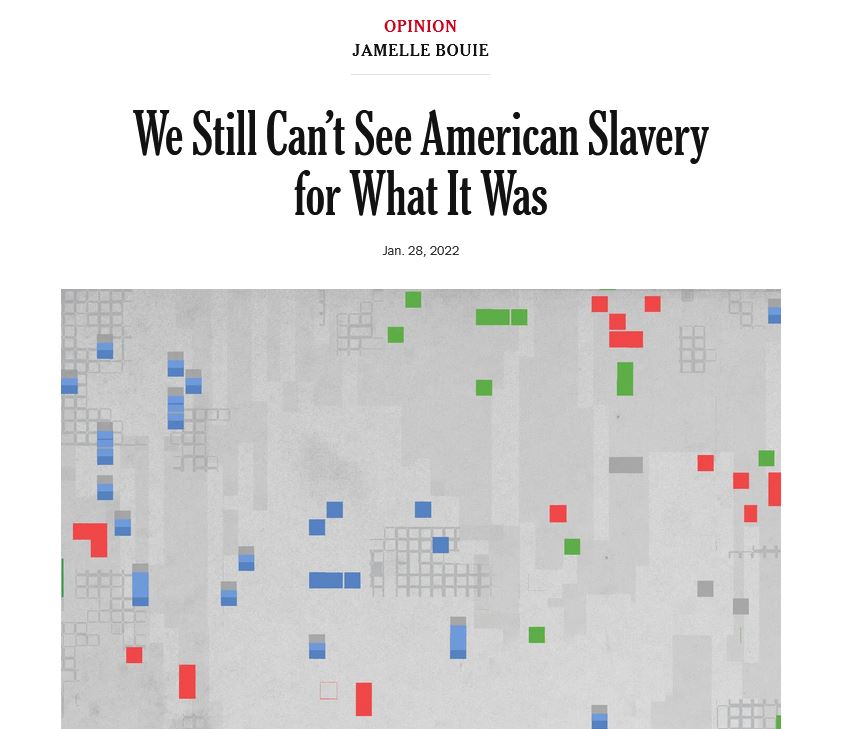By Elisa Tersigni
International education can be a transformative experience for students, giving them a broader perspective and increasing cultural awareness. But for most students, international experiences are inaccessible: even study abroad programs, which are designed to lower the cost of international education, can be prohibitively expensive, and many students have commitments at home (such as elder and child care) that prevent them from travelling. These barriers have only been exacerbated with the COVID pandemic. But the shift to online learning in the past two years has also provided an opportunity for international education without travel, with students Zooming into classes from around the world. Where better to trial virtual international education than in the digital humanities (DH) classroom, where extensive and innovative uses of technology are expected?
This past semester, I taught “Doing Digital History” (HIS410), a fourth-year seminar in digital humanities offered by the Department of Historical Studies at the University of Toronto Mississauga (UTM). This course was divided into three four-week modules. For the second module, I teamed up with Prof. Amanda Herbert—who was teaching “Vast Early Modern Americas” in the Department of History, Durham University (UK)—to co-teach the history of the trans-Atlantic and intra-American slave trades using Slave Voyages, a database that makes historical records of slave trades publicly accessible. As one of the longest-running and most successful examples of a public DH projects, Slave Voyages is an ideal case study and resource for undergraduate DH teaching.

The co-taught module involved a shared reading list and four Zoom lectures, including guest lectures by Prof. Gregory O’Malley (University of California, Santa Cruz) and Prof. Simon Newman (University of Wisconsin-Madison). Prof. Herbert lectured on the history of the trans-Atlantic and intra-American slave trades; Prof. Gregory O’Malley explained the construction of the Slave Voyages databases; and Prof. Newman lectured on how to conduct historical research using Slave Voyages, as well as his innovative digital humanities project, Hidden in Plain Sight: Escaped Slaves in Late Eighteenth- and Early Nineteenth-Century Jamaica.

After their shared lectures, students were put into 10 groups across classes to complete an assignment. Each group was challenged to tell a story within the Slave Voyages data. One of the valid critiques of DH is its increasing reliance on data, which are often rhetorically described as “objective”. But data are both created by subjective people and are also objectifying, and this objectification presents ethical challenges when dealing with Slave Voyages, which represents the already inherently dehumanizing practice of enslavement. The students were asked to find the human in the data: to select one story and then craft appropriate visualizations to tell that story. Groups could then choose whether to participate in a public humanities component by having their visualization posted on Twitter for voting. The members of the group producing the visualization with the greatest number of votes (i.e., likes and retweets) received a prize to recognize their work.

The students rose to the challenge and told not only important but also interesting stories that humanize the people who were enslaved in the trans-Atlantic and intra-American slave trades. Some of the stand-out contributions include an ArcGIS StoryMap—produced by students Nihal Naqvi and Julie Violleau—that follows the final journey of the Clotilda, a trans-Atlantic slave ship that operated illegally in the nineteenth century; a bar graph, created by student Razan Sakr, illustrating the immense number of children trafficked in the intra-American slave trade; and an infographic detailing what student Jehuda Tjahjadi calls “solitary forced migrations”, or slave voyages carrying a single enslaved passenger.

This experiment was possible through generous funding from the University of Toronto’s Global Classrooms Initiative, which provides up to $10,000 to support instructors proposing an international component to their class. Thanks to this funding, I was able to offer honorariums to our guest speakers and pay for student prizes (gift certificates to their local bookstore).
The Global Classroom experiment was not without its issues. As with all collaborations, as number of people involved increases, so do the chances that something will go wrong. In addition to the expected challenges stemming from COVID, technological issues, four time zones, and cultural clashes, we also experienced a strike at Durham University and a medical emergency. I would encourage anyone considering experimenting with virtual international education to plan well in advance and consider multiple contingency plans!
A global virtual classroom inevitably requires more preparation and work, but it arguably results in a greater payoff. Although student responses to the experiment were mixed, ranging from excitement to frustration, every student reported having a clearer sense of their own cultural assumptions and the biases in their education. These important learning outcomes shouldn’t be overlooked; the humanities especially should privilege opportunities that push both students and instructors to examine their own cultural positions. Courses that teach digital humanities are prime opportunities to push the boundaries of the classroom into intercultural virtual spaces.
Elisa Tersigni is the Digital Humanities Postdoctoral Fellow at the Critical Digital Humanities Initiative (CDHI) and Jackman Humanities Institute, University of Toronto.
